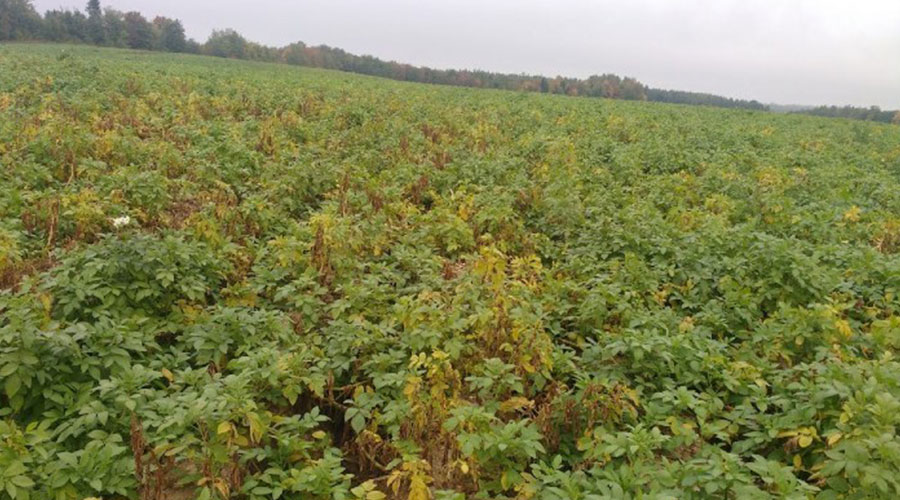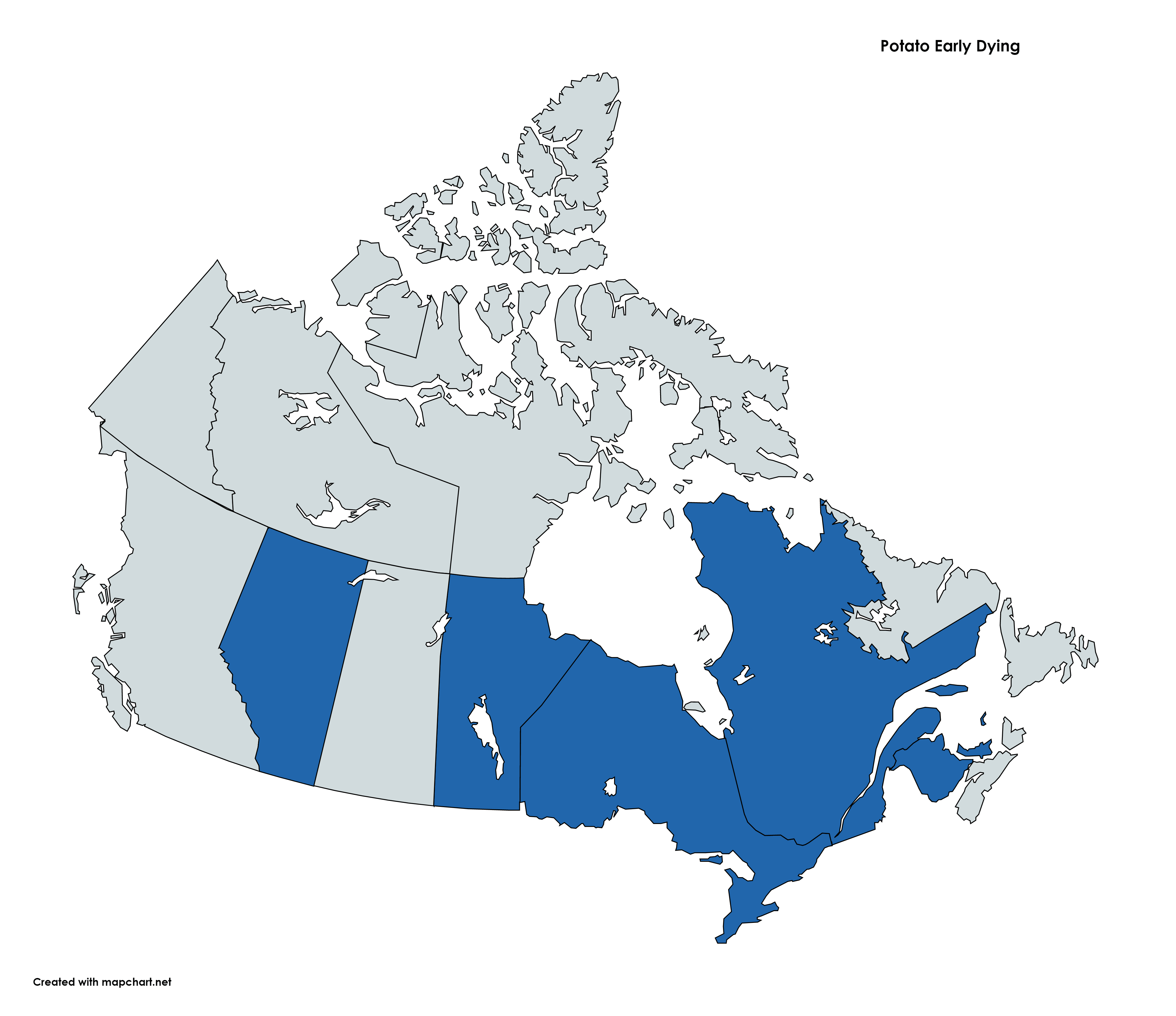
Lead Researcher
Mario Tenuta, University of Manitoba
Objectives
- Identify the species and population levels of the major causal agents of PED in commercial potato fields and their impact on PED disease symptoms and yield, including: isolates of Verticillium for aggressiveness to cause PED in cv. Russet Burbank, parasitic nematodes and other soil-borne diseases associated with the PED complex.
- Improve analytical capability through validation of the standardized PCR protocol developed in GF2 for quantification of Verticillium DNA in soil and the development of a high through-put DNA-based platform for quantification of soil-borne pathogens.
- Assess the potential of management practices to control PED including newly registered fungicide and nematicide control products, improved cropping systems and a one-time only fumigation followed by soil building practices. PED control practices will be evaluated in commercial fields to obtain realistic estimates of the benefits of these practices to growers.
- Assess which properties of soil health (physical, chemical or biological) correlate with PED pathogen populations and disease severity and how improved cropping systems and soil management practices influence soil properties, as measured by soil health assessment, in relation to PED control.
Early Outcomes of Research
Inclement fall weather in MB in 2019 and the COVID-19 pandemic impacted some activities for this project.
Causal Agents and Analytical Capability
- Composite soil samples each from 20 to 30 commercial fields in each of the five provinces (AB, ON, QC, NB, PE) were collected and analysis began for Verticillium and nematodes species and densities in fall 2019.
- Soils were analyzed by real-time PCR for various plant pathogens causing black dot of potato, powdery scab, silver scurf, pink rot, Fusarium dry rot, and Pythium leak of potato.
- Soil samples were then extracted and quantified for Verticillium species based on real-time PCR. Verticillium DNA varied with sample. Using the standard dilution plating method for colony counts for microsclerotial producing Verticillium, 44% of samples produced colony counts. However, the PCR method found that 86% of the samples had quantifiable Verticillium The relationship between colonies and DNA levels in soil samples was not strong.
Management Practices
- A replicated greenhouse trial was conducted in NB on Russet Burbank to evaluate commercial pesticide products including the fungicides Aprovia® (in-furrow) and Senator® PSPT (seed treatment) and the nematicide and fungicide Velum™ Prime (in-furrow). Soil samples were collected at the beginning and at the end of the growth cycle. Verticillium wilt severity was also scored. Analysis of results continues. Field studies were cancelled but are planned for 2020.
- A two-year rotation study was initiated in 2018 in NB and the potato phase was completed in 2019 -2020 to assess the effect of the treatments on potato productivity and disease suppression. The population levels of dahliae and root lesion nematodes at planting in the spring and at harvesting in the fall were determined in both years. The potato yield, the severity of PED and tuber diseases were assessed.
- A rotation study was initiated in 2017 in PE. Eight rotation systems and a control (bare soil) with and without manure were treatments. In 2019 a second phase of a 3yr rotation was initiated and a potato test crop is planned for Cover crop biomass and their total nitrogen and total carbon accumulations, as well as soil nitrate dynamics during the potato phase were monitored monthly. Selected physical-chemical soil properties and potato yield and quality were assessed. Samples were also taken for V. dahliae and root lesion nematode assessments.
- A green manure field study was initiated in NB in 2019 evaluating pearl millet, brown mustard and a mix of the two to compare to typical red clover-barley rotations and grain rotation crops. Biomass and yield data have been collected in plots where appropriate. The same green manures or crops will be grown on plots in 2020 with 2021 being a potato test crop.
- The soil samples for soil health property analysis were collected and are currently being processed and analyzed.
Key Messages for Growers
The CanPEDNet project is a national collaboration of sixteen researchers at twelve different institutions across Canada. Despite early startup challenges, the project is now moving along. COVID-19 restrictions have affected some research activities, particularly lab analyses. However, researchers are striving hard to continue field studies and catch up on field studies where some have been postponed.
Survey work completed thus far indicates that the levels of Verticillium and root lesion nematodes vary greatly between and within provinces. The results of these surveys will hopefully improve testing capacity as well as informing thresholds causing yield losses.

